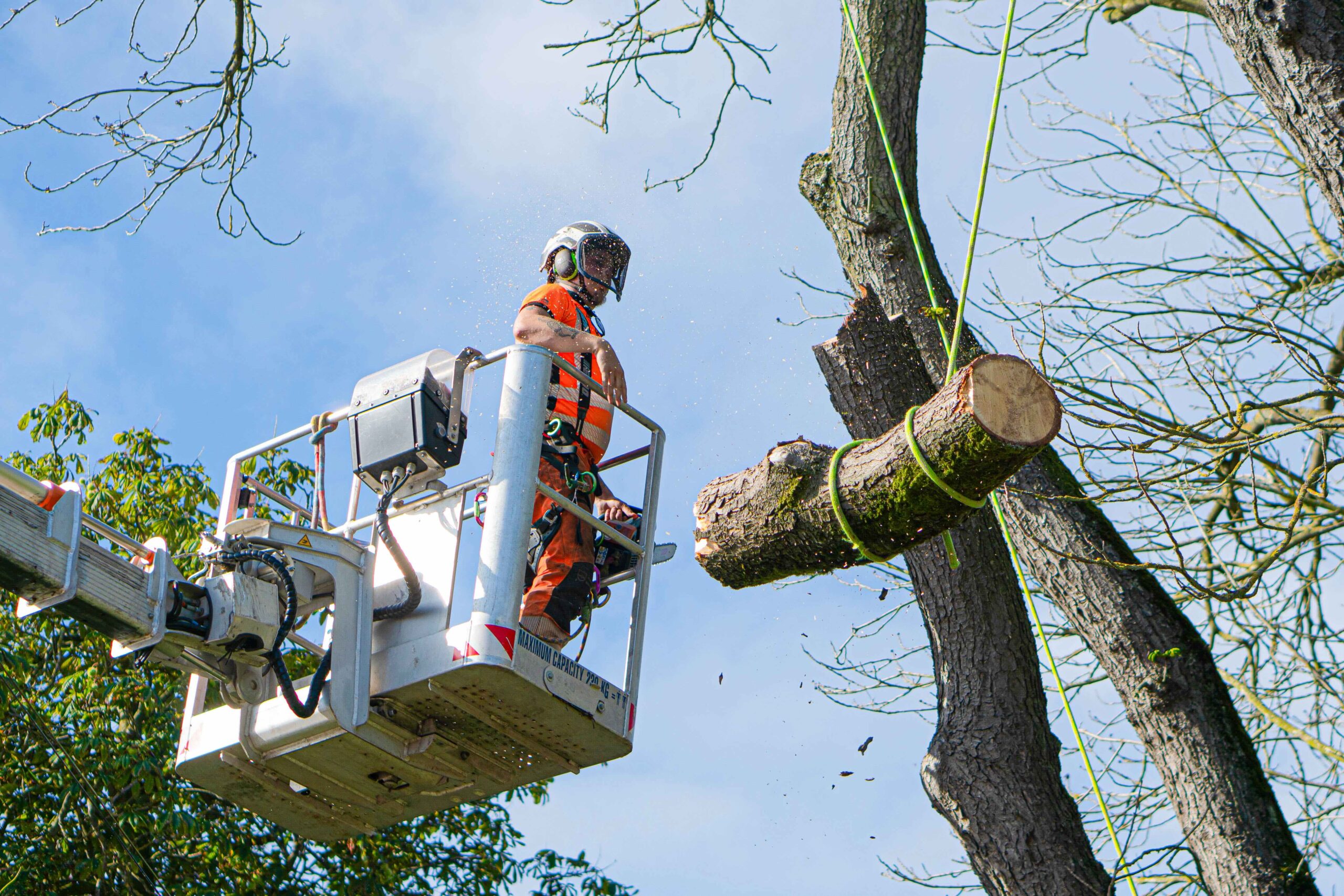Planting trees and hedges is a fantastic way to brighten up your landscape and bring wildlife to your garden. However, picking the best tree species for your garden is not always as simple as your morning cup of tea, if you don’t know what you’re looking for. Doing your research beforehand to choose the right tree can help you create a stunning garden with minimal effort or fuss, reducing the chances of tree disease, overgrowth or subsidence.
The best trees to plant in the UK
Most of the time, advice on suitable foliage for your garden isn’t ‘one-size-fits-all’. It all depends on multiple factors, such as the size of your outdoor space, your level of experience, soil type, sunlight, and of course, personal preference. With that in mind, we’ve put together a list of our favourites.
Atlas Cedar (Cedrus atlantica)
Although the Atlas Cedar is a non-native tree species, it’s become a fan favourite across the UK, situated in and around public, residential, and commercial sites. The blue-ish hue is a popular choice amongst homeowners and a fantastic option for an ornamental garden.
Whilst this tree is an evergreen conifer, it is considerably more tolerant of dry and warm climates, meaning it can easily withstand the highs and lows of typical British weather. The Atlas Cedar is best suited to a larger garden space, growing up to 35+ metres tall, and should be planted at a reasonable distance from other trees or woody shrubs to avoid crowding.
Scots Pine (Pinus sylvestris)
The Scots Pine has long been an option for roadside planting but is a great choice for your garden as well. This immensely hardy tree is the only true native pine species in the United Kingdom, making it a special addition to any outdoor space.
This tree is commonly known for its whorling growth, meaning its foliage grows in a circular pattern around the trunk. It is easy to identify from its reddish, scaly bark and is well known as a great species to host wild flora and fauna. In the Scottish Highlands, this species is famous for sheltering a plethora of rare species, from plants like the lesser Twayblade Orchid or small critters such as the endangered red squirrel.
Although tolerant to almost any soil type, the Scots Pine has a preference for acidic soils with good drainage. Nonetheless, it will thrive almost anywhere it is planted. This species can grow up to 35 metres, but with proper care, it usually stays within the size of the space where it’s planted.
Scots Pine was voted as the national tree of Scotland in 2014, but we think this tree should be the all-time winner for its low maintenance growth, environmental benefits and elegant appearance.
Black Mulberry (Morus nigra)
The Black Mulberry is one of the smaller species on our list, typically reaching between 6-8 metres with a similar branch width. Mulberries are suited to well-drained soil but tolerate most soil types due to their hardy nature.
The Black Mulberry produces small, purple-ish fruits similar to blackberries, but the fruits can be seen in a variety of colours across different species. The Morus nigra variant of this family is known to produce the best-tasting berries – large and juicy with a perfect balance of sweet and tart. This species also attracts birds and pollinators to your garden for food and shelter.
Supporting our belief that the Black Mulberry is a top ten tree, listed by The Royal Horticultural Society for the Award of Garden Merit until 2013.
Small-leaved Lime (Tilia cordata)
The Lime tree, commonly known as the Linden tree, is often found in ancient woodland and conservation areas as a rare but unique species.
Small-leaved Limes have a dense, thick canopy that is renowned for providing shade in sunny landscapes. It also blends beautifully into residential areas, commonly planted to create street avenues.
The Small-Leaved Lime tree can grow to 30-40 metres, so is better suited to medium or large gardens. They grow best in rich soil conditions with plenty of drainage and moisture. Typically, they can be affected by drought, so ensure you are planting in a well-drained area to increase longevity.
Purple Norway Maple (Acer platanoides purpurea)
Commonly named the Crimson King, this purple-leafed beauty provides a regal feel to your garden aesthetic. The Purple Norway Maple is not huge in size but is guaranteed to capture your attention with its striking autumnal colour palette. Within 20 years, this tree can grow to 8 metres in height and spread but has been known to grow beyond this in ideal settings.
The Purple Norway Maple will thrive in most conditions and due to its tolerance with poorly compacted soil, it is frequently used as a street tree. Although tolerant to soil and climate, this tree does require suitable root spacing to avoid root girdling. Root girdling is when tree roots tangle and wrap around each other, cutting off water flow and nutrients.
Weeping Willow (Salix babylonica)
Famous for its loose hanging branches and trailing foliage, the Weeping Willow is well known for its whimsical, fairy tale appearance. It’s well suited for damp, poorly drained soil, particularly along river beds. A large garden with a well-sized pond would make the perfect home conditions for this species and a striking aesthetic of a rustic country garden.
The Weeping Willow is considered a medium to large tree and can reach heights up to 25 metres in adulthood. It’s better suited to the intermediate gardener, as it is susceptible to disease and rot. It is tolerant to most conditions but will struggle to grow in shallow chalky ground or areas that don’t get enough sunlight.
This species is a unique centrepiece for your garden and is also useful for mitigating soil erosion. If you’re not an experienced gardener but are still envious of the famous Weeping Willow, Dr Stump can provide expert advice on making this species thrive.
Common Alder (Alnus Glutinosa)
Native across Europe, the Common Alder thrives in cool, damp territory. From marshes to woodlands, this tree has reached popularity for its ability to tackle soil erosion. This species has the unique ability to interact with bacteria in the ground and produce ammonia to nourish the surrounding soil. Mature trees can tower to 28 metres with a branch spread between 4 – 8 metres, with the tree producing both flower clusters and cones due to its ability to self-pollinate.
This tree is considered exceptionally hardy, able to tolerate all soil types with a preference for damper areas. This makes it a fantastic option for gardens with poor drainage or those situated alongside river banks.
Lebanon Cedar (Cedrus libani)
The Cedar of Lebanon is the largest tree on our list. This giant can grow to 40 metres, making it a great statement piece for ornamental gardens. This tree is able to tolerate most soil types but grows best in drier soil and full sun.
This species has an extensive history, with several mentions in the Bible as a symbol of strength and nobility. Looking at its sturdy trunk and giant canopy, you can certainly see why it’s one of our favourite arboreal giants.
Common Walnut (Juglans regia)
This non-native species is well suited to a range of garden spaces. Due to its large crown, it is a popular choice for home gardens to provide sufficient shade on sunny days. It’s classed as a medium-sized species, so we’d advise planting away from buildings and structures due to its wide branch span.
The Common Walnut produces eponymous edible fruits and provides popular wood material for carpenters.
This species is tolerable to most soil types with full sunlight, but it’s best to avoid areas that have poor drainage or are waterlogged. It’s important to prune branches at the right time of the year to avoid ‘bleeding’ injuring the tree and causing it to leak sap. In short, you need some experience with tree maintenance for this species, but growing a Common Walnut provides a rich reward.
Red Oak (Quercus rubra)
Red Oaks have become well known and loved throughout Europe for their strong visual appeal throughout the seasons, particularly in Autumn when the foliage turns from fresh green to deep reds and oranges.
Since its introduction to the UK, the Red Oak has been planted in many settings. These magnificent trees can now be seen along avenues as street trees, in large estates, and also in smaller residential gardens. Due to its tolerance to urban pollution, the Red Oak is a wonderful choice for those living close to cities or highly populated areas.
The Red Oak is a fast-growing species with a preference for slightly acidic, well-drained soil. At its ultimate height, this tree can grow beyond 30 metres with a branch spread of 8+ metres in maturity. Grown typically in full light, this tree would be best planted as a feature tree within a medium-large garden where it will receive ample sunlight throughout the day with adequate space for growth.
Speak to the tree care professionals
We’ve given you a good starting point for great species to plant in your garden, but if you’re a beginner, it’s advisable to discuss your choices with the experts. As qualified arborists, we can advise on the best species for your garden, tree care, hedge and tree pruning, felling and maintenance to make sure your tree is healthy for years to come.
Contact Dr Stump today to assist with tree care services, expert advice, and tree removal.




